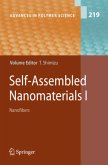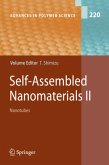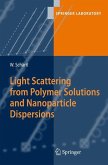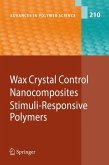Nanotechnology is the creation of useful materials, devices, and systems through the control of matter on the nanometer-length scale. This takes place at the scale of atoms, molecules, and supramolecular structures. In the worldofchemistry,therationaldesignofmolecularstructuresandoptimized control of self-assembly conditions have enabled us to control the resultant self-assembled morphologies having 1 to 100-nm dimensions with sing- nanometer precision. This current research trend applying the bottom-up approach to molecules remarkably contrasts with the top-down approach in nanotechnology,inwhichelectronicdevicesareminiaturizingtosmallerthan 30nm.However,even engineers workingwithstate-of-the-artcomputer te- nology state that maintaining the rate of improvement based on Moore s law will be the most dif?cult challenge in the next decade. On the other hand, the excellent properties and intelligent functions of a variety of natural materials have inspired polymer and organic chemists to tailortheirsyntheticorganicalternativesbyextractingtheessentialstructural elements. In particular, one-dimensional structures in nature with sophis- catedhierarchy,suchasmyelinated axonsinneurons,tendon,proteintubesof tubulin, and spider webs, provide intriguingexamples of integrated functions and properties. Againstthisbackground,supramolecularself-assemblyofone-dimensional architectures like ?bers and tubes from amphiphilic molecules, bio-related molecules, and properly designed self-assembling polymer molecules has - tractedrapidlygrowinginterest.Theintrinsicpropertiesoforganicmolecules such asthe diversity ofstructures, facile implementation offunctionality,and theaggregationproperty,providein?nite possibilities forthedevelopment of new and interesting advanced materials in the near future. The morpholo- cally variable characteristics of supramolecular assemblies can also function as pre-organized templates to synthesize one-dimensional hybrid nanoc- posites. The obtained one-dimensional organic inorganic, organic bio, or organic metal hybrid materials are potentially applicable to sensor/actuator arrays, nanowires,and opto-electricdevices. ThepresentvolumesonSelf-AssembledNano?bers(Volume219)andNa- tubes(Volume220)provideanoverviewonthoseaspectswithineightchapters.
From the reviews:
"This series presents ... reviews of the present and future trends in polymer and biopolymer science including chemistry, physical chemistry, physics and materials science. It is addressed to all scientists at universities and in industry who wish to keep abreast of advances in the topics covered. ... A variety of nanofibers ... with well defined morphologies and dimensions are discussed in terms of self-assembly of molecular and polymer building blocks in bulk solution or confined geometry like nanopores." (Current Engineering Practice, Vol. 219, 2009)
"This series presents ... reviews of the present and future trends in polymer and biopolymer science including chemistry, physical chemistry, physics and materials science. It is addressed to all scientists at universities and in industry who wish to keep abreast of advances in the topics covered. ... A variety of nanofibers ... with well defined morphologies and dimensions are discussed in terms of self-assembly of molecular and polymer building blocks in bulk solution or confined geometry like nanopores." (Current Engineering Practice, Vol. 219, 2009)








